The Italian Larder
Search by alphabet:
A B C D E F G H I J K L M N O P R S T U V W Y Z
Maccarello – See Fish: Mackerel
Maccheroni – See Pasta: Dried Pasta
Maccheroni alla chitarra – See Pasta: Dried Pasta
Mackerel – See Fish: Mackerel
Mackerel, Atlantic horse – See Fish: Mackerel, Atlantic horse
Macrocefalo – See Fish: Cod
Maggiorana – See Marjoram
Mahi-Mahi – See Fish: Mahi- Mahi
Maiale – See Pork
Maiatica – See Olive
Malloreddos – See Pasta: Dried Pasta
Malloreddus – See Pasta: Dried Pasta
Mangetout – See Peas
Manteca – See Butter
Mantis prawn – See Prawn
Maraschino
Maraschino is a golden transparent cherry liqueur made from infusing sour cherries (marasca, ciliegia) and crushed cherry pits in alcohol, fermenting it with cherry leaves and grape wine and ageing it in oak barrels. The liquid is finally distilled with sugar water syrup. It originated in Dalmatia, Croatia.
Buy: Maraschino should be a straw coloured liquid that is sweet and has between 35-38% alcohol content.
Store: Store in a cool, dry place at room temperature. An upened bottle should be sealed and kept at room temperature for up to a year. Watch for discolouration or sugar crystallization and taste to ensure it is still good.
Prepare: It can be used in cake batters and to macerate fruit.
Eat: Maraschino is served as a drink and is used in desserts and to flavour fruit salads.
Mariah– See Fish: Burbot
Marjoram (Maggiorana / Persa / Persia / Persica) (Origanum majorana, Origanum onites, Origanum heracleoticum)
Substitutions: oregano
Marjoram is closely associated with the Ligurian cuisine although it is also used in central Italy.
Buy: Marjoram is a herb which is sold fresh or dried, although the dried version has less flavour. It should smell sweet and have small branches with many small, rounded green leaves. The leaves should not be brown, withered, or falling off the branches. Marjoram grown in hotter climates will have a stronger flavour and aroma than those grown in more temperate climates. It has the strongest flavour in the summer. The “origanum onites” is a pot growing variety which can be grown on a windowsill.
Store: Fresh marjoram can be stored in the drawer of the refrigerator for 4 to 5 days. Excess marjoram can be successfully dried, frozen (although its texture is ruined), or preserved in oil and stored in the refrigerator.
Prepare: Pick the leaves from the stem. Discard the stem. Rinse the leaves under cold water and dry with a thin kitchen towel.
Eat: Marjoram is used as an aromatic in savoury pies (torta pasqualina), stuffings (cima alla genovese), filled pastas (pansoti), sauces, vegetables, and soups (persata).
Marmellata di albicocca – See Apricot jam
Marmora– See Fish: Sea bream, striped
Marsala DOC
Marsala is a fortified wine from Sicilia which was discovered in 1773 by wine merchant John Woodhouse, who was looking to ship wine from Sicilia to England without it spoiling. Marsala is made using wine made primarily from catarratto and grillo grapes with up to 15% inzolia grapes added. Added to this are mistella (grape must with brandy to stop the fermentation process – this is the best and most expensive method), mosto cotto / vin cotto (cooked grape must) and / or sifone (concentrated grape must). Marsala is made using blends of different vintages under the solera system.
Buy: Marsala is golden yellow in colour with orange highlights. It should be highly aromatic with caramel notes (except the Vergine). It can be sweet (dolce), semi-sweet (semi-secco), or dry (secco). The colour ranges from gold (oro), to amber (ambra), to ruby (rubino). The alcohol ranges from 15-21% or higher. It is classified according to typology and aging. The best Marsalas are categorised as Vergine or Superiore.
Terminology:
Fine is aged for a minimum of 1 year and has a minimum of 17% alcohol. It is good for cooking.
Superiore is aged for a minimum of 2 years and has a minimum of 18% alcohol.
Superiore Riserva is aged for four years and has a minimum of 18% alcohol.
Vergine has been aged for 5 years and has a minimum of 18% alcohol. Vergine uses mistella (must with alcohol added to prevent fermentation).
Solera Stravecchio/Solera riserva has been aged for at least 10 years and has a minimum of 18% alcohol.
Speciale implies other ingredients such as eggs, spices, and cream have been added.
Store: Marsala can be kept in a cool place at room temperature unopened for years. The flavour does not improve once it has been bottled and conversely, once opened, begins to lose flavour. Once the bottle is open, you can seal it from the air and store at room temperature for or, even better, in the refrigerator for 3-4 months.
Prepare: Dry Marsala can be served chilled 12-14˚C as a drink before a meal or with food. Sweet Marsala can be served slightly chilled at 18˚C after a meal as it is or to accompany dessert.
Eat: It is used in pastries, custards, creams (zabaglione), puddings (budino di Panettone), gelato (gelato di crema), or cakes (buccellato). Dry Marsala is used to flavour meat dishes (becacce alla lucana, faraona ripiena, finanziera, scalloppine di vitello).
Mascapone – See Cheese: Mascarpone
Mascarpone cheese – See Cheese: Mascarpone
Mascherpone – See Cheese: Mascarpone
Mazzancolla – See Prawn
Meagre, brown – See Fish: Meagre, brown
Mediterranean sand eel– See Fish: Eel, Mediterranean sand
Mela – See Apple
Melanzane – See Aubergine
Melon / Cantaloupe / Watermelon (Melone / Popone, Anguria / Cocomero, Cantalupo) (Cucumis melo, Citrullus lanatus)
Melon is a fruit which is in season during the summer.
Buy: Buy a melon which is blemish free, is heavy for its size, and smells fresh and sweet, but not overly sweet. Don’t buy melons with green skin. Select the more flavourful, male melon which has a black spot on the end opposite the vine end. A ripe melon often has a flattened side where the skin is paler (on a watermelon this should be yellowy not white or green). The fruit should feel heavy for its size, be firm, plump, and have no blemishes on its skin (soft spots, scarring, or bruising). The stem should be moist but not mouldy and have a clean scar. A light cracking at the stem is a sign of ripeness. Netted melons should have no bald patch and if pressed at the stem end they should feel slightly springy (firm means it is unripe and soft means it is overripe). If you shake the melon and hear a sloshing sound, the fruit is overripe. Watermelons should sound hollow when tapped and look for skin which looks waxy and dull. Watermelons should be heavy for their size, and large for their variety.
Types:
Melon (Melone / Popone) (Cucumis melo)
Winter melon (Cucumis melo inodorus) has a thin, smooth green or yellow skin with whitish flesh and is in season during the winter.
Summer melon is either a musk melon or a netted melon with a grooved surface, or a cantaloupe with a smooth, streaked skin and orange flesh.
Cantaloupe (Cantalupo) (Cucumis melo cantalupensis)
The canteloupe is from Italy and is named after Cantelupo, a papal property near Rome. It is smaller, spherical, and has a hard skin. The rind is clearly segmented and smooth although in North America cantaloupe refers to a different variety which is scaly. The flesh has orange flesh with a sweet perfume. July and August are the best months to eat cantaloupes.
Watermelon (Anguria / Cocomero) (Citrullus lanatus)
Watermelon can be round or oblong, has a green striped rind, and weighs up to 15 kilos. It can have yellow or red flesh and sometimes have black seeds. It is in season from June to August. It is eaten fresh, used in sorbets (gelo), ice creams, or preserved (vettaioli).
Store: A ripe melon can be kept at room temperature for up to 5 days or a ripe melon in the refrigerator for up to 3 days wrapped in cling film. Do not let the melon get too close to anything frozen or the flesh will suffer. Cut melons must be stored in the refrigerator wrapped in cling film for up to 2 days.
Prepare: Refrigerate the melon a few hours before serving. If you are using the entire melon without the skin, then cut off the stem end and the opposite end, place the melon cut side down on the board and use a knife to cut off the skin in strips starting at the top and cutting down towards the board. Cut the melon in half. For melons, other than watermelon, use a spoon to scrape out the seeds.
Eat: Melon is normally eaten fresh as a starter with prosciutto (prosciutto e melone), in fruit salads, gelato, sorbet (gelo), in cakes, and tarts. Melon can be candied and used to make panforte. Its sprouts can be preserved (vettaioli).
Melone – See Melon
Menola– See Fish: Picarel
Melù– See Fish: Whiting, blue
Merluzzetto– See Fish: Cod
Merluzzo argentato– See Fish: Hake
Merluzzo atlantico – See Fish: Cod
Merluzzo giallo – See Fish: Pollack
Miele – See Honey
Milk (Latte)
Milk can come from any mammal but the word milk tends to refer to cow’s milk. Ewe’s and goat’s milk are also consumed though. The best milk by far is milk from cows reared on the Alps. It is the creamiest most satisfying milk one could enjoy. Milk is rich in vitamin D and calcium. Calcium is essential for the functioning of the heart, muscles, and nerves and the formation of bones and teeth. Vitamin D protects the body from cancers of the stomach, oesophagus, breast, pancreas, and colon. It also contains protein, phosphorus, potassium, and magnesium. The lactose in the milk, which some people find difficult to digest, promotes the establishment of the intestinal flora, which is essential for human well-being. Milk is an essential part of the diet for children under the age of 4 years old.
Buy: Most milk has been pasteurized to remove any harmful bacteria. Never buy anything labelled “milk drink” as it is not real milk. If the milk is labelled “fresh milk” it should be fresh, not reconstituted powdered milk. Milk should be a creamy white colour with a slightly sweet and a pleasant smell. Generally when cooking or baking with milk, it is best to use whole fresh milk, not UHT, reconstituted (check the label), or skim milk. UHT and reconstituted milk have a bland flavour and skim milk has a watery consistency. Really good milk is often sold in glass bottles and doesn’t travel far from where it is made.
Types:
Fresh Milk: This milk can be raw (latte crudo) which has not been treated, although it is quite rare to find this nowadays. Milk which has been pasteurized (latte pastorizzato/latte fresco) has been heated to 72-75˚C for 20 seconds in a vacuum and then is quickly cooled to remove any pathogens, thereby preserving the milk.
Whole milk (Intero) is the best type of milk you can buy and must have a fat content no less than 3.2%. True whole milk will have cream that will rise to the top and needs to be shaken back into the milk. Whole milk will be creamier in the summer when the cows have fresh grass to eat while winter milk will be paler and thinner. Some breeds of cows produce milk which is slightly blue in colour.
Homogenized milk has had the cream evenly mixed throughout. It is good for making gelato as it freezes well but it takes longer to heat.
Semi-skimmed milk (Parzialmente scremato) has undergone a centrifugal process to remove its cream. Semi-skim milk will have had half of the cream removed and has 1-1.8% fat content. It is sometimes refortified with vitamins and milk solids to make up for the nutrients removed by the process. It is good for low-fat diets but is not beneficial to small children.
Skimmed milk (Scremato) has undergone a centrifugal process to remove its cream. Skim milk will have had most of the cream removed and has 0.5% fat content. It is sometimes refortified with vitamins and milk solids to make up for the nutrients removed by the process. It is good for low-fat diets but is not beneficial to small children.
Long-life milk (Latte sterilizzato): This milk has been pasteurized, homogenized, and then sterilized to create milk which has a long shelf life and does not require refrigeration.
Ultra Heat Treated (UHT) milk (Uperizzazione) has been pasteurized and then heated to 150˚C for one second to preserve the nutrients and attempt to preserve the lactose. If the lactose caramelises, this is detrimental to the flavour of the milk. While it is inferior to fresh milk, it is helpful to have a container in the pantry if procuring fresh milk is inconvenient.
Evaporated milk (Latte concentrato / Latte evaporato) is whole or skim milk where 50-60% of the water has been removed. It is then homogenized, tinned, and sterilized at 110-115˚C. It can be used in cooking and can be whipped. Before whipping, chill the milk in the freezer until crystals form along the edges. It has a different taste to fresh milk.
Condensed milk (Latte condensato) is whole or skim milk where 50-60% of the water has been removed, it is tinned, and then sterilized. It has extra sugar so is sweet and sticky with a toffee taste. It can be used in cooking and can be whipped. Before whipping, chill in the freezer until crystals form along the edges.
Dehydrated milk / Powdered milk (Latte in polvere) is powdered milk which has a bland flavour. This process makes the milk more easily transportable and prolongs the shelf life. It is vastly inferior to fresh milk but can be used as an ingredient in yoghurt.
Store: Store fresh milk in a closed container in the refrigerator at a temperature not higher than 4˚C until the expiration date on the packaging. Long-life milk can be held at room temperature until the expiration date on the package, usually 3 months. Once opened, long-life milk must be kept in the refrigerator and will last up to 7 days. Evaporated milk can be held at room temperature unopened for years but once opened must be kept refrigerated and used within 1 day.
Prepare: If possible, try not to boil the milk as it reduces its nutritive properties, makes it more likely to scorch, and the solidified proteins and the milk skin form a skin on the top of the milk. It should be heated slowly at low temperatures to no more than a simmer. The addition of flour or sugar helps prevent skin from forming on the top of the milk. Dishes made with milk can benefit from having cling film pressed down on the top of them while cooling or before serving to prevent the skin from forming.
Eat: Italian adults typically don’t drink milk, except in coffee. Milk is an essential ingredient in making yoghurt, cheese, ricotta, mozzarella, custard (latte dolce fritto), creams, soups (minestra di castagne), gelato, puddings (budino di latte), and besciamella sauce. It is also used to boil pasta (lasagne al latte), rice (riso e latte), polenta (polenta al latte), salt cod , stockfish (baccalà alla vicentina), pork (maiale al latte), and many desserts.
Mollica di pane – See Breadcrumbs
Monkfish – See Fish: Monkfish
Monk’s head mushroom – See Mushroom: Funnel
Mora – See Blackberry
Morchella, fungo – See Mushroom: Morel
Morel mushroom – See Mushroom: Morel
Mormora– See Fish: Sea bream, striped
Moro – See Orange
Moscardino – See Octopus
Moscardino bianco – See Octopus
Mozzarella Cheese – See Cheese: Mozzarella
Mozzarella di bufala – See Cheese: Mozzarella
Mucca – See Beef
Mugella – See Fish: Grey mullet
Mullet, Red– See Fish: Mullet, red/Mullet, striped
Mullet, Striped – See Fish: Mullet, red/Mullet, striped
Mullet, striped red– See Fish: Mullet, striped red
Mushroom (Fungo) (Boletus)
- BUTTON
- CAESAR’S MUSHROOM
- CHANTERELLE
- HONEY ARMILLARY MUSHROOM
- MOREL
- OYSTER MUSHROOM
- PORCINI
- SAFFRON MILK-CAP
- ST. GEORGE’S (PRUGNOLO)
Equivalent: 120 grams = 1 starter or side dish serving
A mushroom grows underground in symbiosis with tree roots and is invisible to the eye. Left undisturbed the mushroom plant can live for 10 years at the right temperature and humidity. The capped stalk we think of as a mushroom is the fruit of the plant. There are more than 35,000 varieties of mushrooms which come in all shapes and colours. Many varieties of mushrooms are poisonous so only experts should pick wild mushrooms. The most prized Italian varieties are porcini and royal agaric. Mushrooms are rich in potassium and have phosphorus, calcium, and iron.
Buy: Mushrooms are sold fresh, dried, frozen, preserved in oil (funghi sott’olio), preserved in vinegar, or tinned in water. I do not recommend mushrooms tinned in water.
Mushrooms should be plump, dry, clean and firm. If the gills are open, they should look fresh and not be wet or matted down. Buy fresh mushrooms which don’t have a bad smell, the skin is not darker than usual, wrinkled, or blemished, and does not seem dried out, full of water, sticky, or slimy.
Dried mushrooms, particularly porcini, are excellent but generally used differently than the fresh ones. Dried mushrooms should have a strong scent. The larger and more intact the slices, the more expensive, but it is also easier to detect how long they have been on the shelf. If the dried mushrooms are crumbly, they are too old.
Store: Place mushrooms in a closed, brown paper bag or wrapped in a slightly damp towel, in the refrigerator (not in the vegetable drawer) for up to seven days (for variations to this see the specific mushroom type). Do NOT put them in a plastic bag or they will become slimy. They are delicate in that they are susceptible to drying out if not covered properly but also will be come soggy and decay if exposed to too much moisture. Mushrooms can be thinly sliced and dried under the sun, but need occasional turning. Do not try to preserve mushrooms in oil or vinegar at home as there is a risk of botulism. They can be successfully frozen but the texture deteriorates. Storage times vary according to the variety, so see the types below. Dried mushrooms should be kept in a cool, dark, dry container which is air-tight.
Prepare: Wipe away any dirt with a damp cloth (NEVER wash mushrooms as they soak up water which dilutes their flavour). Trim any damaged spots and tough stems. Check the variety under “Types” below to see if the stalk is used or reserved for broths. Dried mushrooms can be rehydrated in warm water for 20 minutes before using.
Eat: See specific types. Mushrooms preserved in oil are served as a starter. Only porcini, button, and Caesar’s mushrooms are eaten raw in salads. Mushrooms are grilled, baked in parchment, sautéed (funghi trifolati), used in soups and stews, and used to dress pasta (pasta con funghi al pomodoro), polenta, and risotto. Mushrooms pair well with butter, olive oil, garlic, parsley, lemon, rosemary, tarragon, onions, leeks, potatoes, barley pine nuts, wine, and rice.
Types:
Button / White / Domestic / Cultivated / Brown / Chestnut / Crimini / Italian field / Portobello (Champignon di Parigi / Prataiolo/ Cappellaccio/ Fungo di Parigi) (Agaricus bisporus, Agaricus hortensis, Agaricus pratensis)
Button mushrooms are cultivated and so are ubiquitous (and cheap).
Buy: There are two types of button mushrooms- the white ones (also called button, domestic, cultivated) and the brown ones (also called chestnut, cremini, Italian field, and the very large ones, Portobello). The brown button mushrooms have slightly more intense flavour than the white ones. They range in size so select the size based on the cooking preparation. The smaller button mushrooms which still have enclosed gills are good for eating raw. The newly opened button mushrooms are good for preserving under oil. The medium-sized button mushrooms are good for making into sauces and sautéeing. The very large brown mushrooms are sold as “Portobello” mushrooms and are best grilled or roasted. It is best to buy them loose so they can be inspected individually. Button mushrooms can be sold fresh or preserved in oil.
Prepare: Wipe away any dirt with a damp cloth. Remove the stem and save for broth. If the mushrooms are very dirty, you can rinse quickly in cold water but it is not ideal. Button mushrooms will oxidise after they are brushed so particularly if they are to eaten raw, sprinkle lemon juice on them after rubbing or slicing to prevent them turning brown. Typically the stem is removed and discarded or reserved for making stock.
Eat: These mushrooms can be used in most mushroom dishes. They are good to mix with dried porcini mushrooms when fresh porcini are not available or prohibitively expensive. Button mushrooms can be thinly sliced and eaten raw as a salad (insalata di champignon crudi), deep-fried (fritti dorati), made into a paste to dress pasta (tonnarelli alla paplina, alla boscaiola) or pizza, grilled, roasted, or sautéed (trifolata).
Caesar’s mushroom (Ovolo) (Amanita caesarea)
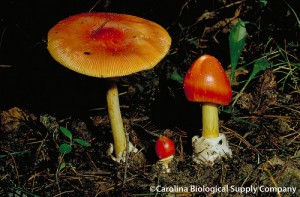
Caesar’s mushroom by Carolina Biological Supply Company
Regional names: cocco, coccola, cocco giallo, fungo relate, bolé real, and cocon
The Italian name “ovolo” is derived from the Italian word for egg, “uovo”, as the Caesar’s mushroom when very young is encapsulated in a white veil similar to an egg. As they grow it changes shape from spherical and closed to flat and open. They have been prized since the days of ancient Rome and were called the “food of the Gods”. Caesar’s mushrooms are very rare and so are expensive. It also grows in Sichuan province. Be careful as the poisonous Amanita muscaria mushroom resembles the Caesar’s mushroom.
Buy: Caesar’s mushrooms have a distinctive orange cap, yellow gills, and white stalks. The flesh is white. The can can grow up to 20 cm in diameter and the stalk can be 10 to 15 cm in length. The very young, closed or semi-closed Caesar’s mushrooms are particularly prized and are eaten raw.
Store: Store for no more than 2 days.
Prepare: Wipe with a dry cloth.
Eat: They are best eaten raw thinly sliced as a salad (ovoli in insalata) or on top of carpaccio. The open Caesar’s mushroom are cooked, typically preserved in oil, in soup (zuppa di ovoli), or baked with a breadcrumb topping.
Chanterelle / Girolle (Cantarello)(Cantharellus cibarius)
Regional names: galletto, gallenella, galluccio, galitola, gallinaccio, finferla, cresta di gallo, gialletto, galuzzo, garitola, finferlo
Chanterelles have a strong flavour which I love. They are one of the most popular mushrooms in Europe. In Liguria, there are many recipes using chanterelles. They are in season from late summer through autumn.
Buy: They can be yellow or white in colour and have a compact, meaty, funnel-shaped cap that ranges in size from 4 to 10 cm. The stem is the same colour as the cap and is compact and thick. The flesh inside is white with a spot of yellow. Try not to buy chanterelles which have broken into pieces or have too much sand in them. Chanterelles are also sold preserved in oil, dried, and frozen. Fresh are best.
Store: Chanterelles are hardy and can stay in the refrigerator for 8 to 10 days.
Prepare: Chanterelles can be difficult to clean. Brush with a damp cloth and unless very dirty, do not rinse with water. Add chanterelles later in the cooking process so they do not toughen.
Eat: Chanterelles are excellent in risotto, pasta (spaghetti al sugo di funghi cantarelli), sauces, and stewed as an accompaniment to meat such as chicken or beef cheek (guancia di manzo con patate e finferli). They pair well with eggs, garlic, and parsley.
Funnel / Trooping funnel / Monk’s head (Cimballo / Imbutino) (Clitocybe gibba, Infundibulicybe geotropa / Clitocybe geotropa)
Regional names: cimaballella, volterrano, agarico imbuiforme
The funnel mushroom is in season during the autumn.
Buy: The funnel mushroom can grow to more than 10 cm in diameter and more than 15 cm in height. It has a funnel shaped cap and is white or yellowish in colour. It is very meaty in texture and flavourful.
Types:
Common Funnel (Cimballo / Imbutino) (Clitocybe gibba) is white in colour.
Trooping funnel / Monk’s head (Cimballo) (Infundibulicybe geotropa / Clitocybe geotropa) is yellow in colour.
Store: Keep in the refrigerator for up to 3 days.
Prepare: The stem is hard and needs to be removed prior to cooking.
Eat: It is commonly used in sauces and soups. It can also be fried and preserved in oil.
Honey armillary mushroom (Chiodino / Piopparello / Pioppino) (Armillariella mellea)
Regional names: famigliola buona, sementino, ciudin, cuet
The Italian name, chiodino, derives from the word for nail, “chiodo”, in reference to the shape of the mushroom. The honey armillary mushroom grows in bunches on logs or tree stumps in the autumn. Their flavour varies depending on what type of wood they grew on. The honey mushroom is abundant as it can be cultivated so its price is relatively low.
Buy: When the honey armillary mushrooms are young, they have a semi-spherical cap which then grows larger as they mature. At medium maturity the cap is still conical and when it is very mature it flattens around the edges and maintains a raised point in the centre of the cap. They also start out a rosy colour with a reddish hue and then turn brown when mature. The gills are white, sometimes flecked with red and the flesh is white. The stem is slightly curved and can grow up to 15 cm in length. They are sold fresh and preserved in oil.
Prepare: Cut off the stalk and throw away or use for broth as they are fibrous in texture. Honey armillary mushrooms can become viscous when cooked, parboiling them beforehand is a way to avoid this, although this can mean they lose their flavour.
Eat: They are best stewed with tomatoes (chiodini in umido col pomodoro) or garlic and parsley and served with polenta. In Lombardia they are cooked with duck, rice, guinea fowls, pork ribs, or preserved in oil. They are also popular in Veneto. In Veneto and Piemonte, the sauté honey armillary mushrooms with in olive oil with garlic and chopped parsley (funghi trifolati).
Morel (Spugnola / Morchella) (Morchella esculenta)
Morel is in fact more of a fungus than a real mushroom. They are usually only found in traditional Italian cooking in Emilia, specifically Modena. Morels are one of my favourite mushrooms. Unfortunately they can be expensive, though it should be noted they are more prized in France than in Italy.
Buy: Morels have an oval, conical or elongated cap that are 5 to 13 cm tall that are spongy in texture. They have a hollow stem, range in colour from tan to brown to grey or black. The best morels are black or brown with a larger oval head in relation to the stem. They are sold fresh or dried, which are also very good.
Prepare: Prepare just before cooking, as morels are highly perishable. As they have a spongy texture they are difficult to clean. Ideally, just wipe them with a cloth or brush away dirt with a stiff brush. If you must rinse them in water, the flavour will suffer.
Eat: In Modena, morels are used to dress pasta (tagliatelle, lasagne Bianca con le spugnole) or cooked with cream on their own (spugnole alla crema).
Oyster mushroom (Orecchione / Fungo ostrica / Pleurotus / Gelone) (Pleurotus ostreatus)
Regional names: orecchione, cardella, melina, peperona, agarico ostreato
These mushrooms are cultivated and so are ubiquitous (and cheap). They are used in a lot of recipes in Puglia. They have a delicate flavour.
Buy: Oyster mushrooms have fan-shaped caps which taper off into their stems. They normally grow in a cluster on stumps, logs, or branches of hardwood trees. They range in colour from pale brownish grey to brownish black. The flesh is white, thick, and soft. The stems are short and tough and the gills are white. It is preferable to buy younger ones as they tend to be more tender, as oyster mushrooms mature they can toughen.
Types:
King trumpet mushroom / French horn mushroom / King oyster mushroom / King brown mushroom / Boletus of the steppes / Trumpet royale (Cardoncello / Cardarello / Cardarella) (Pleurotus eryngii ) This variety has a thick stem with a funnel-shaped meaty cap. It is the most common mushroom in Puglia and Basilicata.
Prepare: Wipe away any dirt with a damp cloth. Cut off and discard the stem or save for broth.
Eat: This variety can be used in most mushroom dishes. They are normally stewed, broiled, or preserved in oil. King trumpet mushrooms are gratinéed (cardoncelli gratinati) or cooked with tomatoes (cardoncelli al pomodoro).
Porcini /Cep / Bolete / Pine bolete / Pinewood king bolete / Summer Cep (Porcino) (Boletus edulis, Boletus reticulatus, Boletus aereus, Boletus pinophilus)
Other names: bolé; bolé dij fò; carej; caplet; porsin
Porcini are in season from late summer through autumn. They usually grow under oak, beech, chestnut, fir and pine trees. There are many varieties of porcini mushrooms, but not all of them are good. The king of the porcinis is the boletus edulis, also known as the common porcini. The best ones are grown in Calabria, Campania, and Piemonte. Porcini mushrooms, together with Caesar’s mushrooms, are one of the great mushrooms of Italian cooking and often command a high price. They have a flavour unrivalled by other mushrooms and have a meaty texture.
Buy: Porcini have rounded or flat caps ranging from 5 to 30 cm in diameter with a stalk that can be 20 cm or longer in length and 2 to 5 cm in diameter. Look for smaller, compact and elastic porcini with a hazelnut-coloured cap and a short stalk, indicating that they are a younger and of higher quality. If, however, the intention is to roast or grill, slightly more mature mushrooms are preferable. They should not be sticky. The meaty cap has white or yellow or dark brown pores underneath, rather than gills like other mushrooms. Look for mushrooms which have white or light yellow pores. A mushroom past its prime will be flaccid in texture, have a large cap, a long stem, and thick pores under the cap with a greenish tinge. While the varieties of porcini range in colour from white to brown or dark grey with blackish purple tones, the flesh inside is white. The best porcini will still have a brown cap. Porcini grown in North Africa tend to have a lot of sand in them requiring them to be washed thoroughly, therefore compromising the flavour. Porcini are sold fresh, frozen, or dried.
Dried porcini offer a more intense flavour so are valued independently. Select dried mushrooms which are creamy in colour and are not dark, crumbly, or have signs of pests. Tiny pieces of dried porcini may be gritty so try to buy larger pieces. They should be light cream in colour with some dark patches and should have a strong scent.
Types:
Bolete (Porcino nero / Bronzino) (Boletus aereus) havea dark brown cap with a stalk with a dark net-like appearance. The pores range from greyish white to yellow.
Pine bolete / Pinewood king bolete (Porcino rosso/ Porcino dal gambo rosaceo) (Boletus pinophilus) have a brown cap with tones of red and purple but the flesh is white. The stalk is fat with a purplish hue.
Porcino / Cep (Porcino comune) (Boletus edulis) is the most common variety and the cap ranges in colour from white to chestnut colour. The stalk is white and more slender. It is the most prized.
Summer cep (Porcino estivo / porcino reticolato) (Boletus reticulatus) have a very fat stalk with a net like appearance and are not as firm as other porcini.
Store: Store for no more than 2 days. Porcini can be frozen although this may affect their texture.
Prepare: These mushrooms are quite large and their stems are eaten. Normally porcini are simply brushed with a dry cloth and the pores inspected for parasites. Thick pores can be trimmed. If the porcini are very sandy then they will need to be washed in water. Peel the stems with a mushroom peeler or small knife and cut off the end which grows in the ground. Cut the stems from the stalk. Finely slice the stems and the stalks, keeping separate.
Dried porcini need to be soaked for 20 minutes in warm water before using (strain the soaking liquid to remove the grit and use as broth in cooking).
Eat: Porcini are good raw thinly sliced (porcini crudi) or cooked. They are excellent in starters, soups, salads, pastas, risotto, polenta, stuffed pastas, in omelettes, in sauces, with meat, used in stuffing, and on their own- especially grilled (porcini alla griglia), deep-fried (porcini fritti, porcini impanati), stuffed (porcini ripieni), baked (cappelle di porcini al forno) or fried (porcini trifolati). Many dishes in Liguria use porcini mushrooms.
Saffron milk-cap / Red pine (Agarico delizioso / Sanguinello) (Lactarius deliciosus)
Regional names: sanguine lattaiolo, pennecciola, fungo del sangue, lapacendro buono, sanguine, trun, tarun russ
These are valued for their flavour and are used in many recipes in Liguria and Calabria.
Buy: Saffron milk-caps have an orange convex cap that ranges in size from 4 to 14 cm in diameter. They sometimes have dark orange lines in concentric circles on the cap. The stem ranges from 1 to 2 cm in diameter and 3 to 8 cm in length. When cut, the mushroom will exude an orange coloured “milk”.
Eat: They are normally fried or sautéed and pair well with olive oil, garlic and parsley. Typically, they are paired with strong flavourings.
St. George’s (Prugnolo) (Tricholoma gambosum, Thricoloma georgii, Lyophyllum georgii, Calocybe gambosa)
Regional names: sinarolo, spignolo, maggengo, maggiolino, fungo di san Giorgio, sangiorgino, musciarone, masìn, misciarulu, fungo de la saeta
St. George’s mushroom is in season in the spring and is highly prized. It is used in many recipes in Molise.
Buy: It has a firm, meaty light brown or whitish cap which grows to 5 to 10 cm in diameter. When young, the St. George’s mushroom’s cap is semi-spherical in shape and smooth when mature. It has a large stem which is 1 to 2 cm in diameter and up to 3 to 7 cm in length. The flesh is firm and white.
Eat: They pair well with tomatoes, and are used in sauces, soups and stews. St. George’s mushrooms can also be used to dress fresh egg yolk pastas such as tagliatelle or tagliolini.
Musino – See Fish: Grey mullet
Mussel, Sea date / Date mussel / Pholas dactylus (Cozza / Mitilo / Muscolo, Dattero di mare / Folade) (Mytilus galloprovincialis, Modiolus barbatus, Lithophag lithophaga, Pholas dactylus)
Regional names: Mussels: arcella niura, dattero, modiola, mosciolo, musciolo (Marche), pediocio, peocio (Venice); Pholas dactylus: lattaro ‘e mare, lattaro verace,
Equivalents: 900 grams = 2 servings
Buy: Mussels are a shellfish which filter water, so it is essential they are grown in clean waters. They should only be consumed from September to April due to toxins produced by the algae during the summer months which the mussels filter. All the shells should be firmly shut with no cracks. Only buy very fresh seafood. In Italy, they are farmed and sold in net ags with labels stating the species, place of origin and date and place of packing. Ensure that the mussels are farmed in an area of clean water free from pathogens, fecal matter or heavy metals in the water as the mussels filter the water. They should be eaten within 5 days of packing. Buy more than you need as you may need to discard some.
Types:
Mussel (Cozze / Mitilo) (Mytilus galloprovincialis, Modiolus barbatus, Mytilus edulis) have a rounded triangular shaped shell which is blackish blue with a smoky brown hue. The inside has a pearly shine to it. They can be farmed or grow wild attaching themselves to rocks or piers in clumps. The small to medium-sized mussels are the best. Avoid large ones if possible. The best mussels are from Tarantoin Puglia.
Types:
Bearded horse mussel (Cozza pelosa / Modiola) (Modiolus barbatus) is prized for its meat. The shell is easily recognizable as it is covered in fur and is not larger than 5 cm in length. It can be cooked but is usually served raw.
Blue mussel / Common mussel (Cozza edule / Cozza spagnola / Cozza Atlantico) (Mytilus edulis) is from the Atlantic Ocean. They grow up to 10 cm. It has delicate and flavourful meat.
Mediterranean mussel (Mitilo Galloprovinciale / Mitilo commune) (Mytilus galloprovincialis) grow in the Mediterranean Sea and are farmed. They grow up to 10 cm.
Sea date / Date mussel, Pholas dactylus (Dattero di mare, Folade) (Lithophag lithophaga, Pholas dactylus)resemble dates and are difficult to gather as they secrete an acid to help embed themselves in rock. Date mussels must be sold fresh.
Date mussel (Dattero di mare) (Lithophaga lithophaga)have a dark brown shell that is typically 5-8 cm in length but can grow up to 15 cm. They are relatively rare but are found in Liguriaand Puglia. They are highly prized for their delicate flavour.
Date mussel / Pholas dactylus (Folade / Dattero di mare) (Pholas dactylus) have an elongated, dull white or grey coloured shell with two openings. They can be 10-12 cm in length. The foot is flat with rasps to assist in boring.
Store: Keep the mussels alive until it is time to cook them. Place them on a damp towel in the refrigerator between 0 to 6C. They can be kept like this for 2 to 3 days. The day you are going to cook the mussels, scrub the shells under cold running water. Then mix together 100 grams of non-iodized salt per 1 litre of cold water and cover the mussels with this salted water for several hours in the refrigerator so that they filter out any sand or grit.
Prepare: Discard any shells which are open or cracked. Soak the date mussels in cold water, any shells which float to the surface should be discarded. Use a kitchen towel to grab the furry beard of the mussel and pull it off, drawing towards the hinge (not necessary for date mussels). Discard the beard and rinse the mussels again. Wash in several changes of water, agitating the water with your hands to remove any grit and scrape the shells by scraping them with a knife or stiff brush to clean then. If they are to be opened while raw, use an oyster knife and insert it in the point of the triangle and pry open. Otherwise they can be placed for a few minutes on a tray in a hot oven or over a high flame in a frying pan (reserve any liquid discharged to filter and use in the dish). Seafood is best cooked gently- by steaming, poaching, or light broiling. Discard any mussels which have not opened during cooking. Seafood needs very little flavourings if very fresh. The meat inside the mussel varies from bright orange, indicating they are female, to more beige.
Eat: Both mussels , bearded horse mussels and date mussels can be eaten raw, dressed with lemon and pepper (cozze alla leccese), but are generally served cooked. Date mussels are typically cooked in oil, garlic, and parsley (datteri di mare alla marinara, datteri di mare alla veneziana) or used in soups (zuppa di datteri giuliana, zuppa di datteri di La Spezia), or stews (datteri di mare a stufato). Due to their delicate flavour, do not pair date mussels with strong flavours.
Mussels are good boiled (cozze bollite) and used in pasta (vermicelli con le cozze in bianco) and rice (riso con le cozze) dishes, fish soups (zuppa di cozze in bianco, zuppa di cozze al pomodoro), or main dishes. They can also be stuffed (cozze ripiene al sugo), baked (cozze al gratin, cozze in tortiera, tiella di riso con le cozze), deep-fried (cozze fritte, cozze e orziadas), sautéed (cozze, cocozze e ove), or stewed (cozze alla pugliese). There are many recipes in Puglia for mussels.
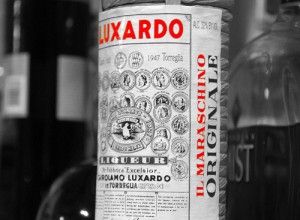
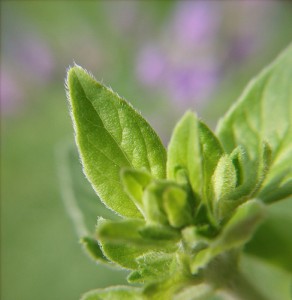
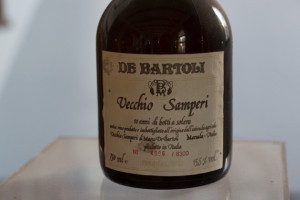
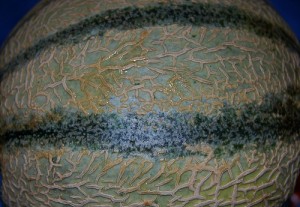
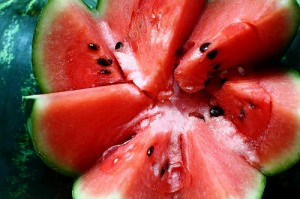
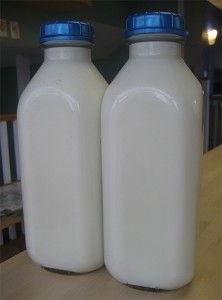
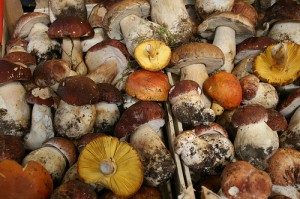
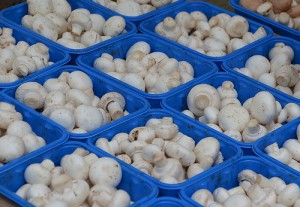
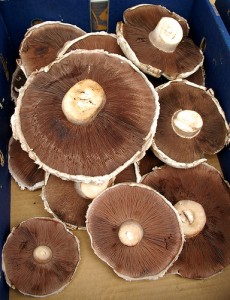
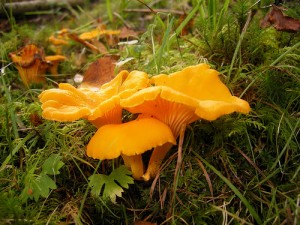
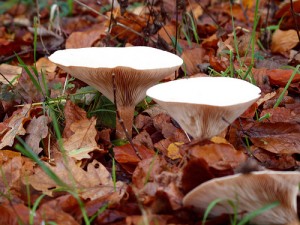
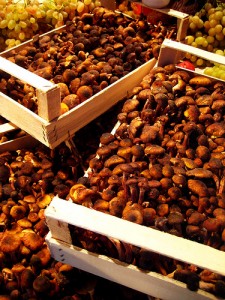
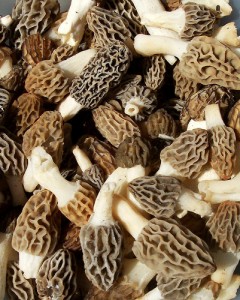
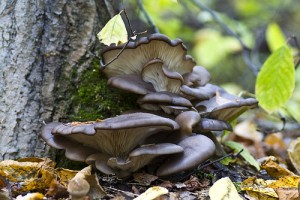
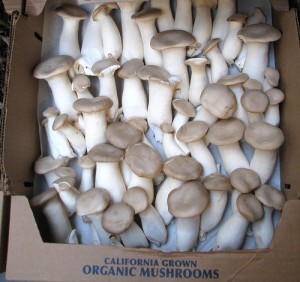
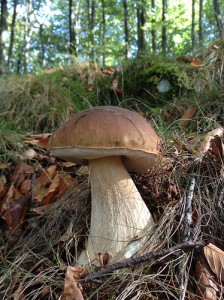
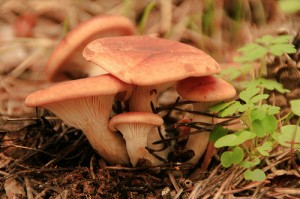
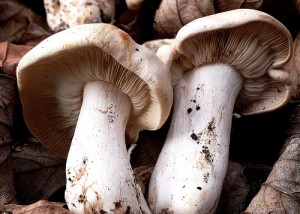
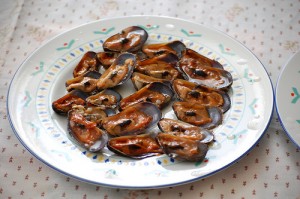
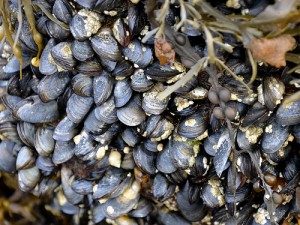
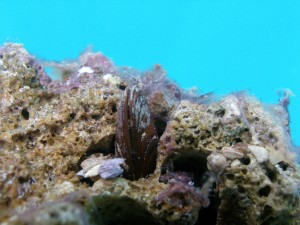

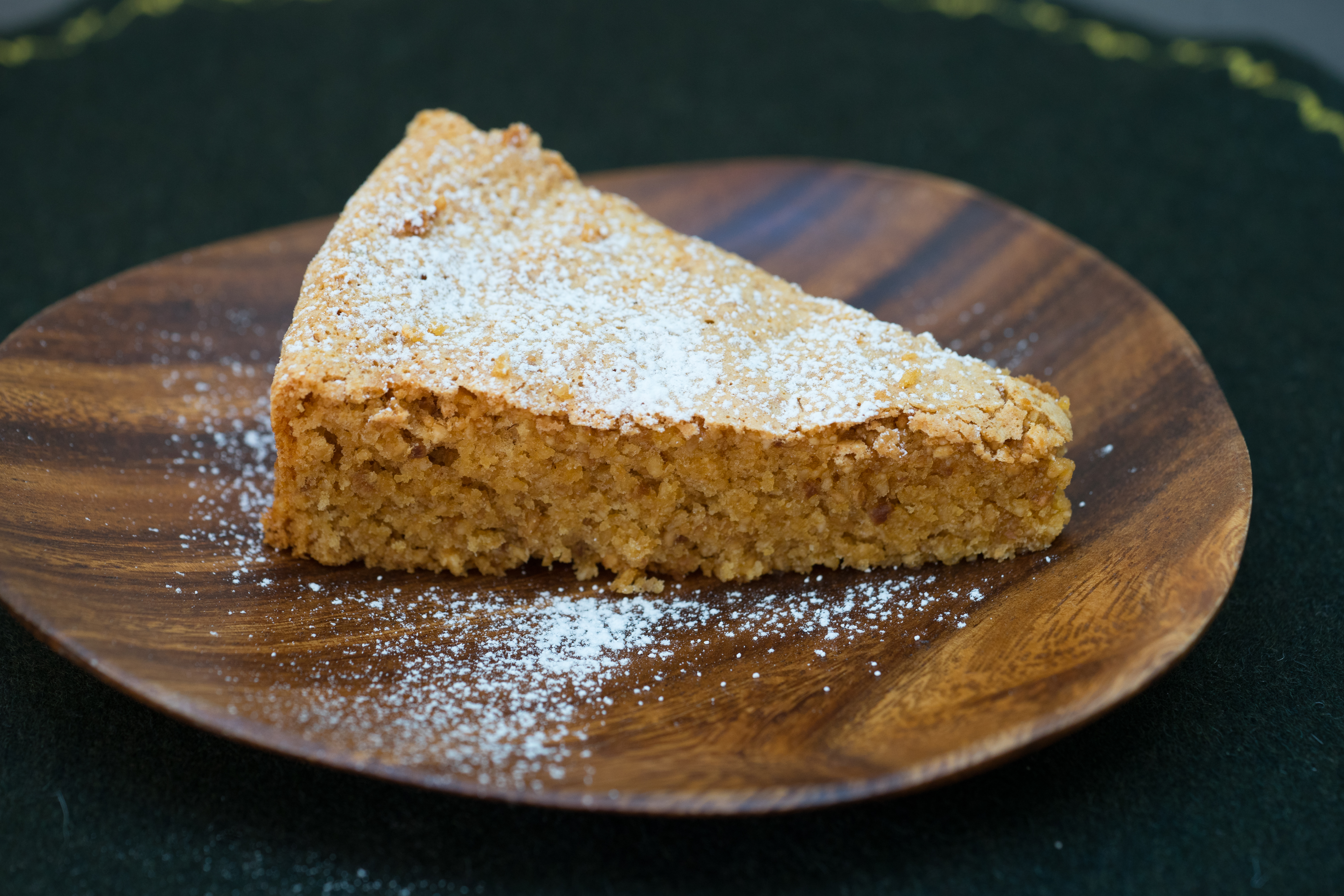
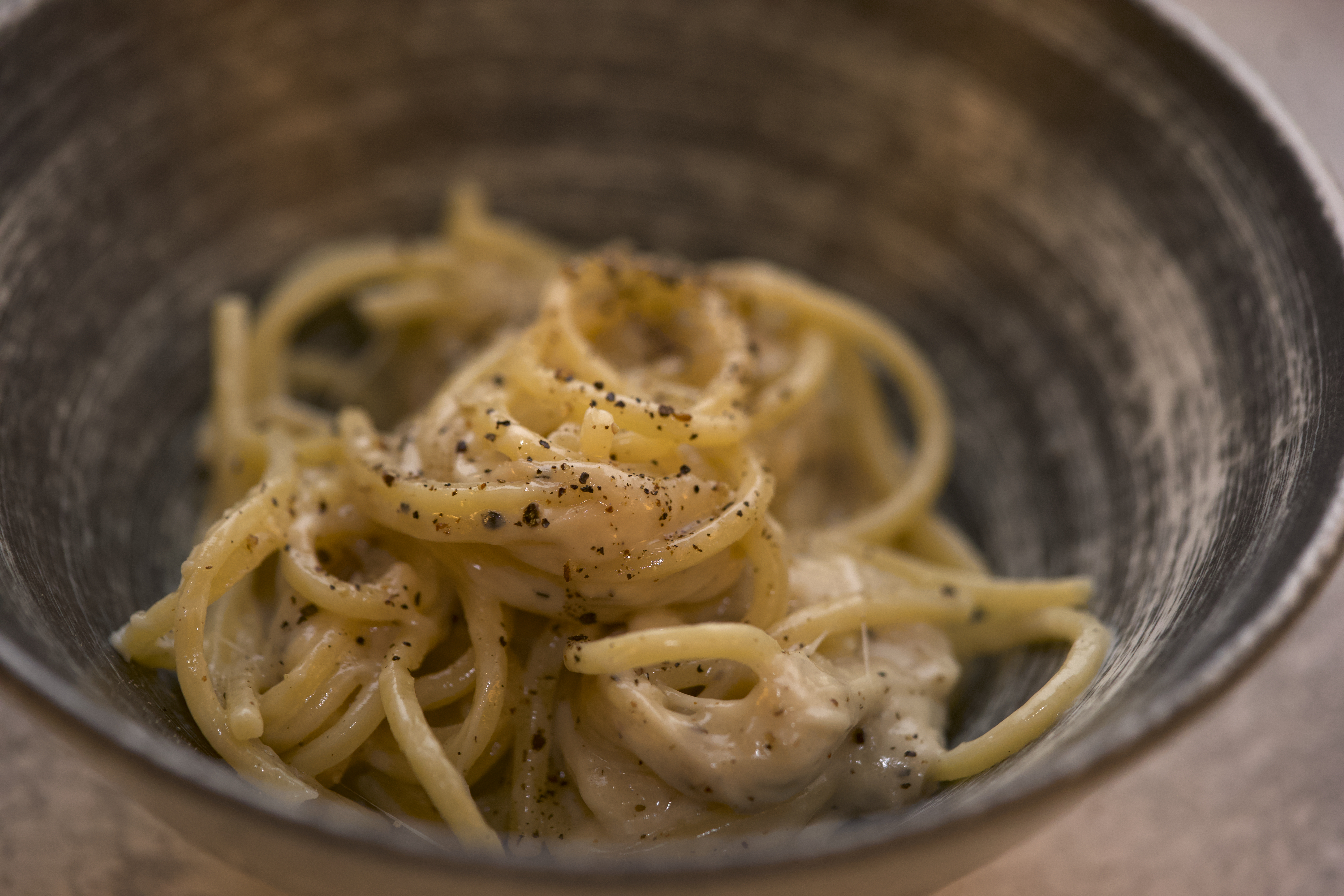
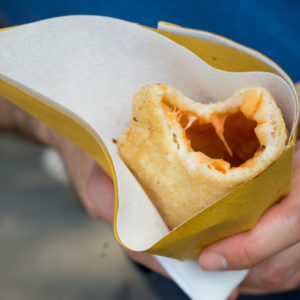
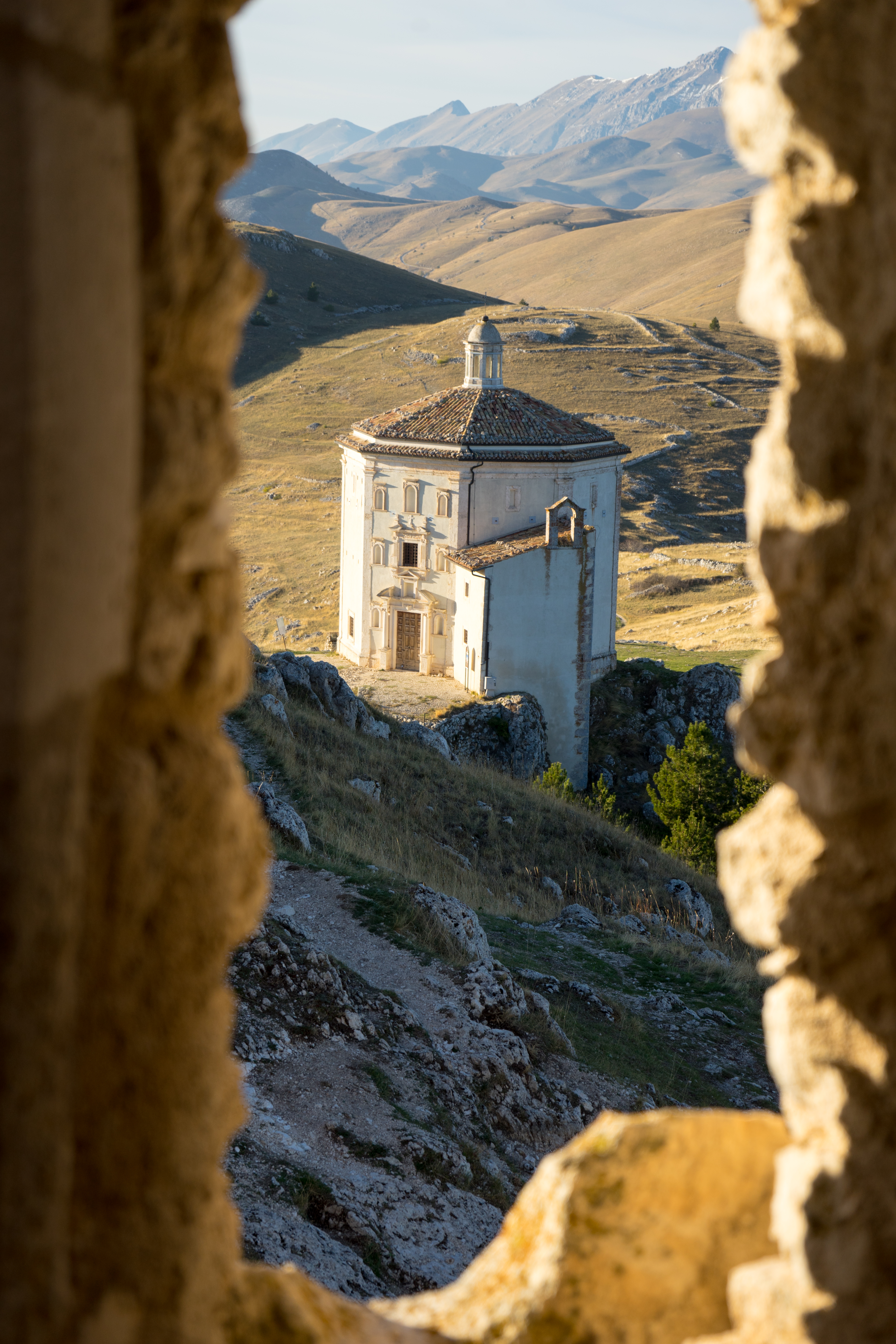
Leave a Reply